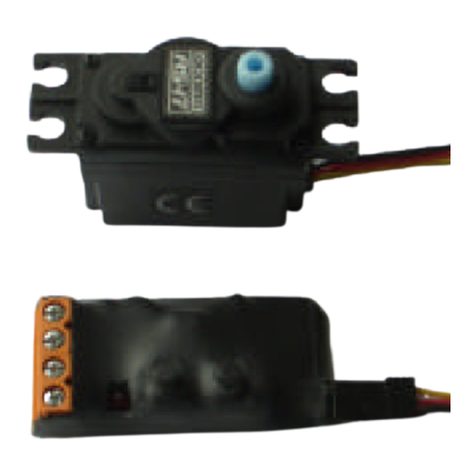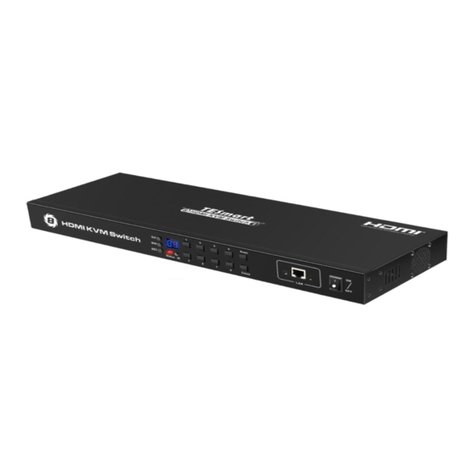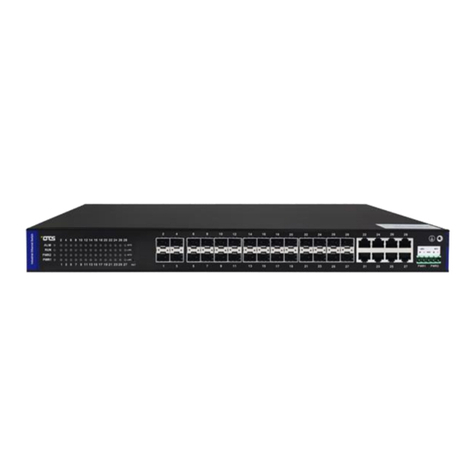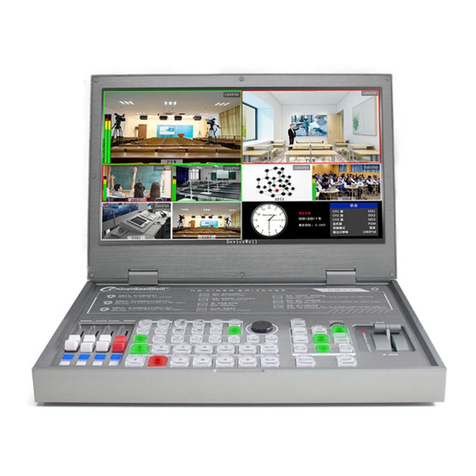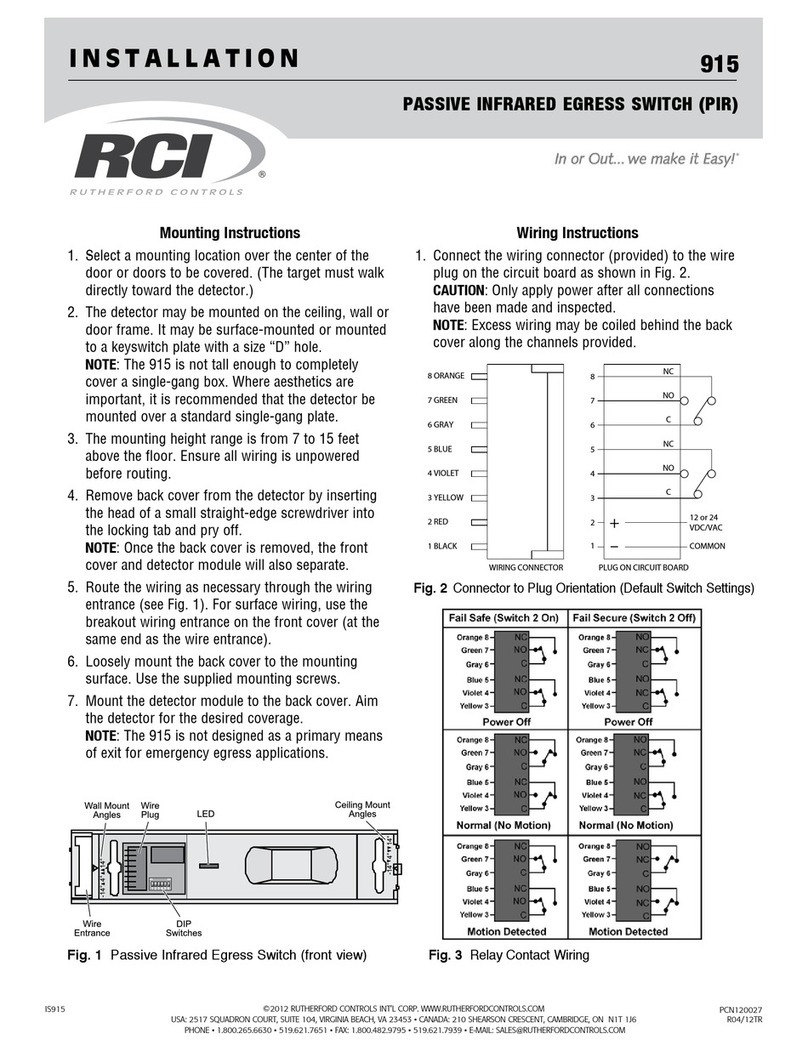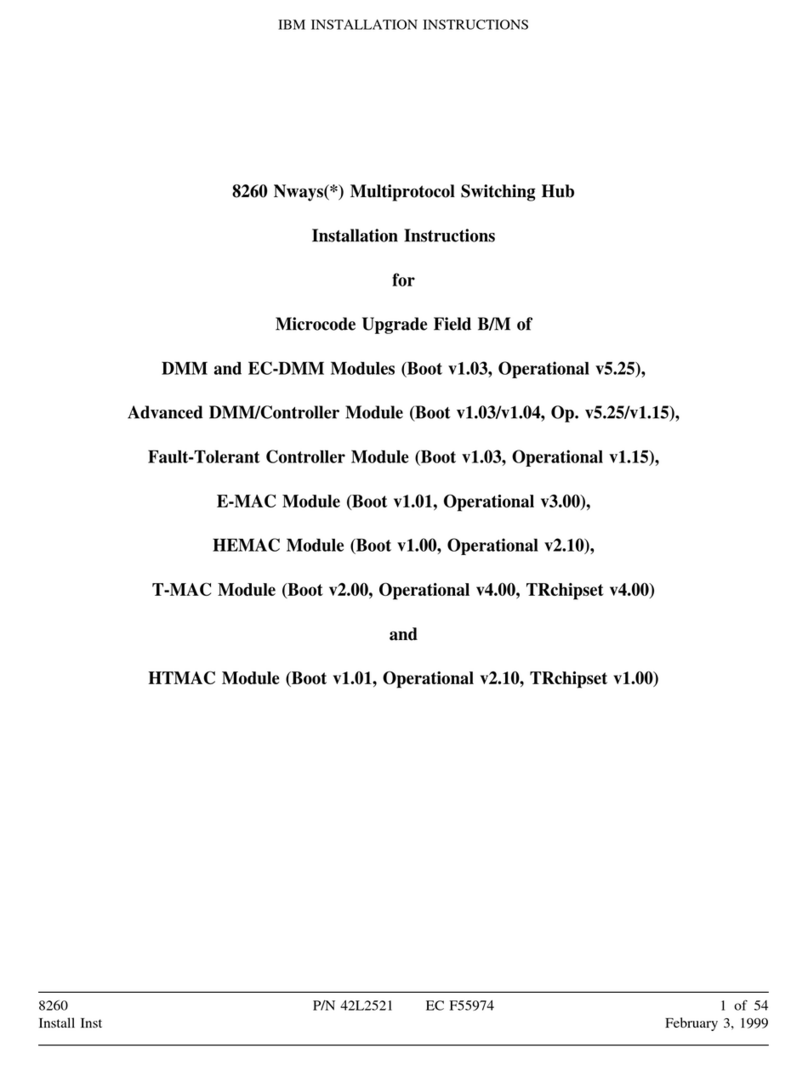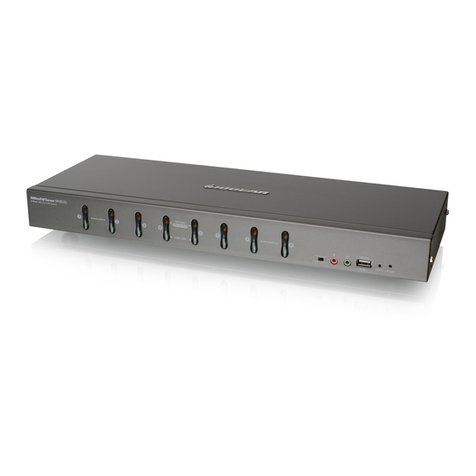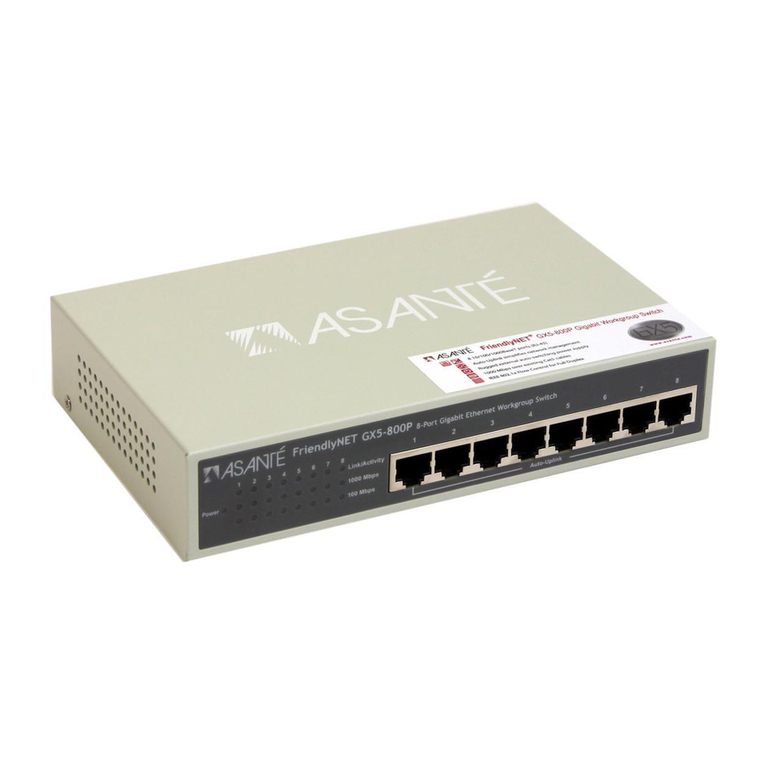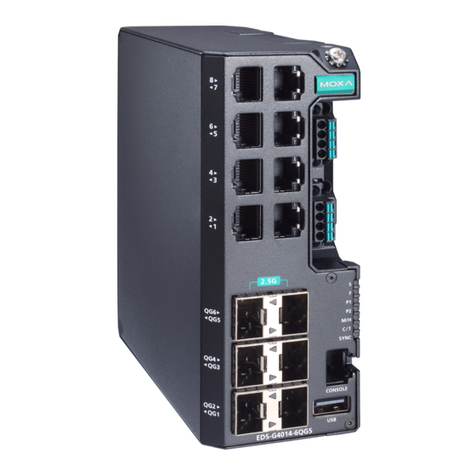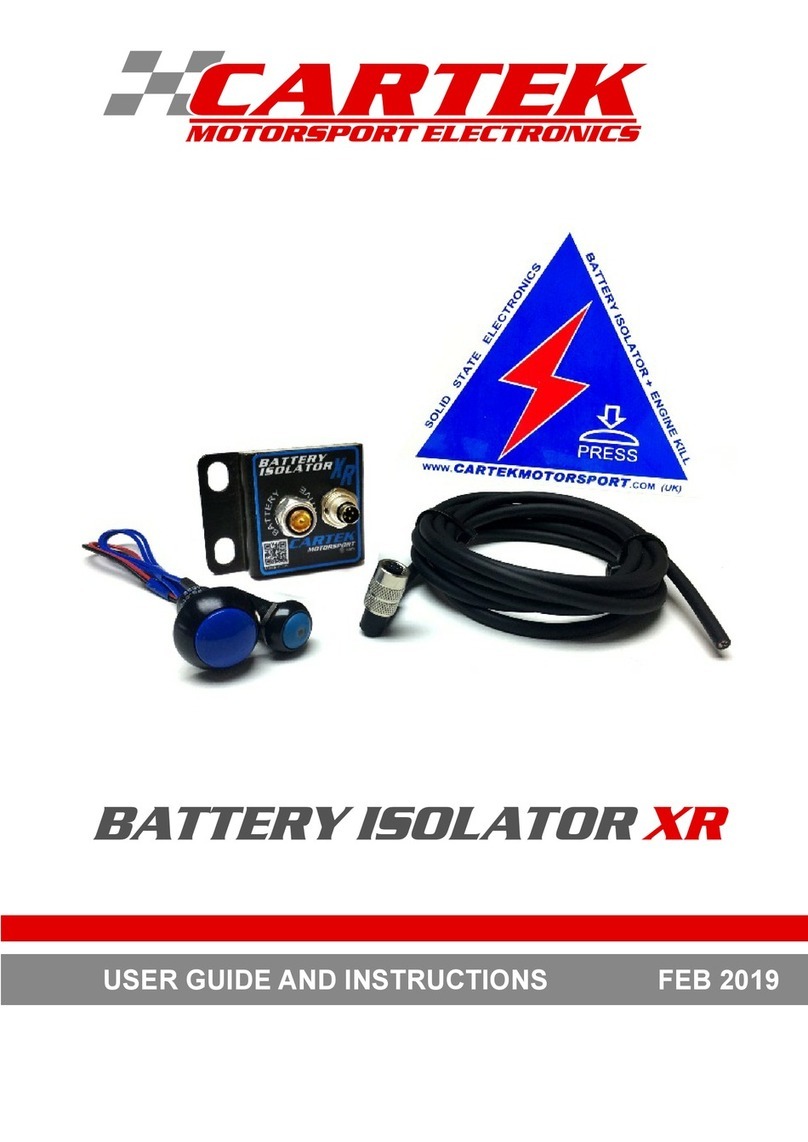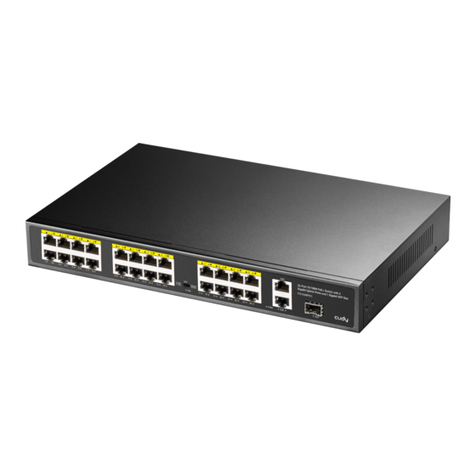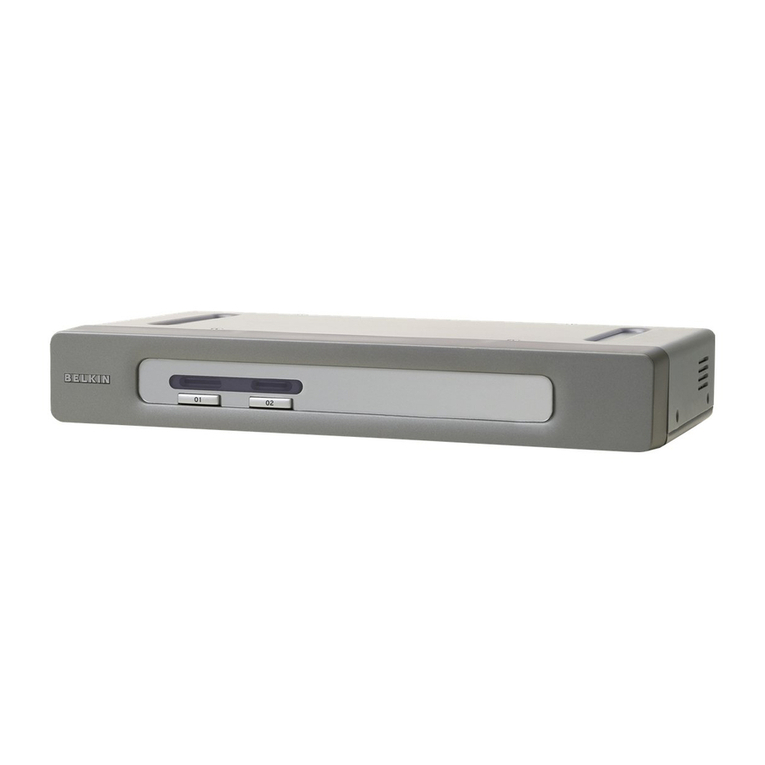Timpdon Electronics SCS3 User manual

Timpdon Electronics Tel 0161 -980 7804 Issue 1–March2011
Web www.timpdon.co.uk
Features
•Controlled motion between three servo positions with a single switch,
changeover using a standard RC servo.
•Fully user programmable for three independent servo positions and
rotation speed. Programmed settings retained when power removed.
•Ideal for control of three position points.
•Digital microprocessor controlled.
•Small size –45mm x 20mm x 16mm.
•4.8 V to 6 V d.c. supply.
•Screw terminals forconnections to supply and control switch.
3 pin plug for direct servo connection.
Timpdon
Electronics ServoSwitch
Model SCS3

Timpdon Electronics Tel 0161 -980 7804 Issue 1–March2011
Web www.timpdon.co.uk
Installation and Wiring
Operating
Switch
S1
S2
LED V+
Control
0V Red
Yellow
Black
Connections to Servo
+4.8 to +6V
0 V
SCS3
1
23
Notes
1Connect a d.c. supply of between 4.8 V and 6V to the screw terminals,
as shown. –Please read the Cautionary Notes below, before selecting
your power source.
Do not exceed the maximum permitted nominal supply voltage of 6 V.
Although the SCS3 will accommodate higher voltages without blowing
up, many RC servos will not.
Ensure that the power supply polarity is correct before powering up.
2Connect a single pole changeover on-off-on operating switch between
the switch input terminal and the +6V and 0V supplies, as shown. Note
that position 1of the servo, as described below,corresponds to the
+6V connection, position 2to the open circuit connection and position
3to the 0V connection.
3Plug the servo connector on to the three pin plug connector on the
opposite end of the SCS3. Ensure that the black wire on the servo is
positioned towards the bottom edge of the SCS3, adjacent to the 0V
screw terminal.

Timpdon Electronics Tel 0161 -980 7804 Issue 1–March2011
Web www.timpdon.co.uk
Operation
1Once programmed, as described below, simply select
the required servo
position 1, 2or 3using the operating switch. The servo will move to
the selected programmed position, at the programmed rotation speed.
2Once the servo started has started moving towards any programmed
position it can not be stopped or reversed until it has completed its
programmed travel.
The LED indicator will be on whenever the servo is moving, and off at
all other times, during normal operation.
Programming
Programming or re-programming may be performed at any time, using
push button switches S1 and S2, with indication provided by the LED
indicator.
Programming is performed in four steps, in order –Position 1,
Position 2, Position 3 and Rotation Speed. No new programmed
settings will be saved unless all four programming steps are correctly
completed, in sequence.
Each of the three Position settingsof the servo may be anywhere
within the controlled operating range of the servo –approximately 160
degrees rotation on most servos.
Programming Procedure
Press and hold both switches S1 and S2 together until the LED
illuminates continuously, after about 2 seconds. Then release both
switches.
1You are now in Step 1 –Program Position 1 Setting.
The LED will flash with single shortflashes.
Adjust the required Position 1 setting using either S2to increase the
servo position or S1to decrease it. The actual rotation direction is
servo dependent.

Timpdon Electronics Tel 0161 -980 7804 Issue 1–March2011
Web www.timpdon.co.uk
When satisfied, press and hold both switches S1 and S2 together until
the LED illuminates continuously, after about two seconds. Then
release both switches.
2You are now in Step 2 –Program Position 2 Setting.
The LED will flash with double short flashes.
Adjust the required Position 2 setting using either S2to increase the
servo position or S1to decrease it. The actual rotation direction is
servo dependent.
When satisfied, press and hold both switches S1 and S2 together until
the LED illuminates continuously, after about two seconds. Then
release both switches.
3You are now in Step 3 –Program Position 3 Setting.
The LED will flash with single long followed by single short flashes.
Adjust the required Position 3setting using either S2to increase the
servo position or S1to decrease it. The actual rotation direction is
servo dependent.
When satisfied, press and hold both switches S1 and S2 together until
the LED illuminates continuously, after about two seconds. Then
release both switches.
4You are now in Step 4 –Program Rotation Speed.
The LED will flash with single long followed by double shortflashes.
In programming step 4, the servo will rotate continuously between the
two outer set positions which have already been programmed,at the
current rotation speed.
There are sixteen steps of rotation speed, varying from about 0.25 s to
20 s for 90 degree rotation. Press and release S2to increase the speed
by one step, or press and release S1to decrease it by one step.
Please read the Cautionary Notes
below before attempting to use very
high rotation speeds.
After the last step, the rotation speed will revert to the other end of the
speed scale.

Timpdon Electronics Tel 0161 -980 7804 Issue 1–March2011
Web www.timpdon.co.uk
When satisfied, press and hold bothswitches S1 and S2 together until
the LED illuminates continuously, after about two seconds. Then
release both switches.
5At this point only, programming is complete. All new settings will now
be saved in non-volatile memory, and applied to SCS3operation. The
unit will then automatically exit programming mode, theLED will
extinguish and the SCS3is ready for normal operation.
Cautionary Notes
1The current consumption of a servo, when in motion, increases with the
rotation speed. At high rotation speeds, the current on a single standard
servo can reachas much as 500 mA.
Most small batteries [eg AA cells] used by many modellers to power
servos can not supply this level of current without a very significant
voltage drop, in the order of one or two volts, at the battery terminals.
With 4.8V supplies, or with partially discharged batteries, this may well
result in erratic servo operation if the battery terminal voltage falls below
the minimum specified servo operating voltage.
If you experience such erratic operation, either reduce the servo rotation
speed or improve your power supply arrangements before assuming that
the SCS3 is faulty and returning it for repair.
2Although the rotation speed of the SCS3can be programmed to a
maximum speed of 0.
25 seconds for 90 degree rotation, many servos can
not achieve this speed.
If you program a rotation speed higher than the servo can actually
achieve the servo will not be able to keep up with the programmed
output of the SCS3when moving betweeneach programmed position,
and vice versa.
If this occurs, and you have bounce levels programmed, the actual
bounce levels achieved in normal operation may vary considerably from
those programmed, or even be lost completely. This problem is likely to
be more apparent if you have programmed large angles of rotation.

Timpdon Electronics Tel 0161 -980 7804 Issue 1–March2011
Web www.timpdon.co.uk
If this happens, reduce the programmed rotation speed until the effect is
corrected, or change the servo for one with a higher maximum rotation
speed.
For the ACOMS AS17 servo, supplied by Timpdon Electronics, the
maximum specified rotation speed is approximately 0.35 s for 90 degree
rotation at 5V.
Table of contents
Other Timpdon Electronics Switch manuals
Popular Switch manuals by other brands
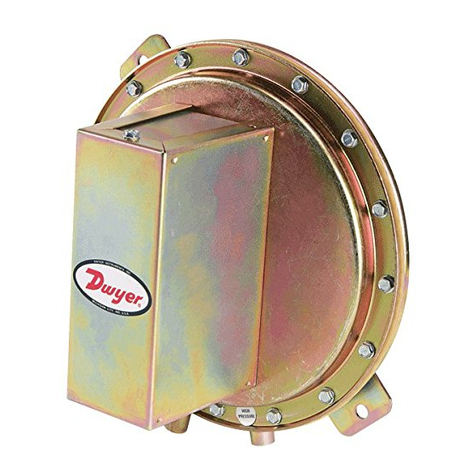
Dwyer Instruments
Dwyer Instruments 1620-1 Installation and operating instruction manual
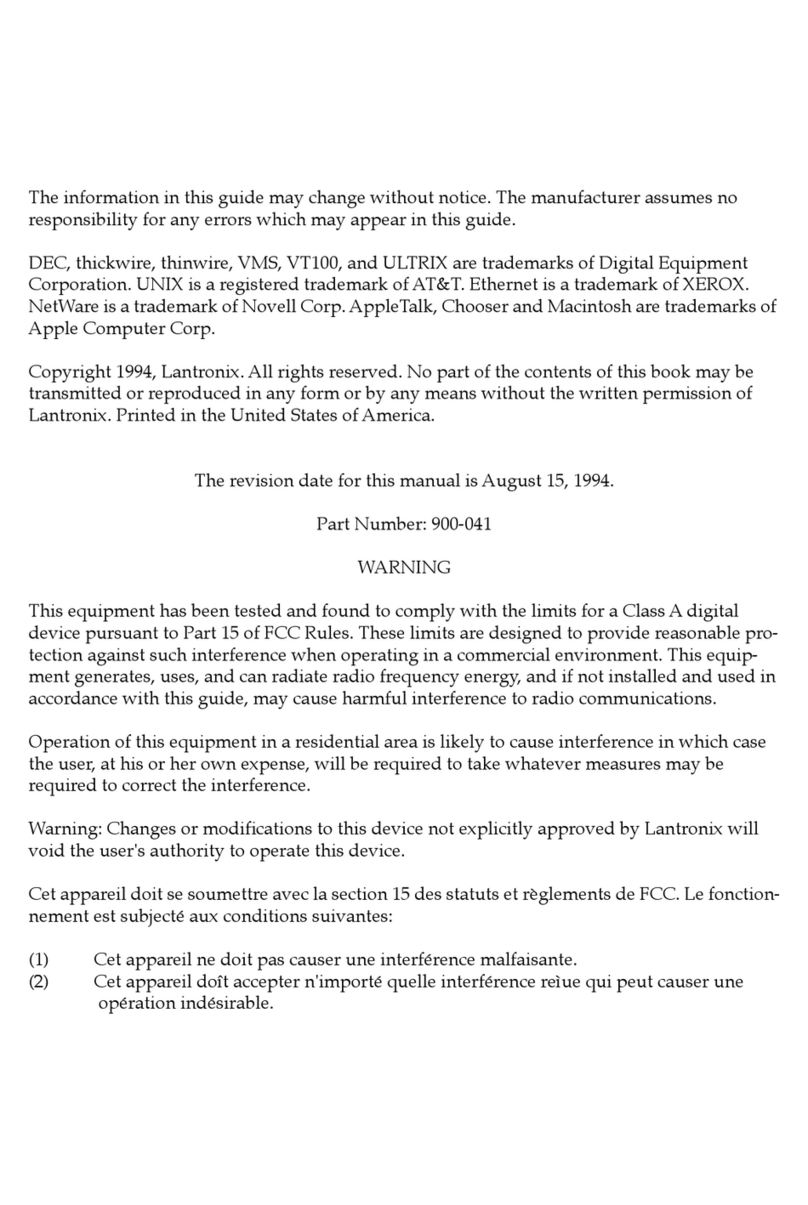
Lantronix
Lantronix LSB4 Reference manual
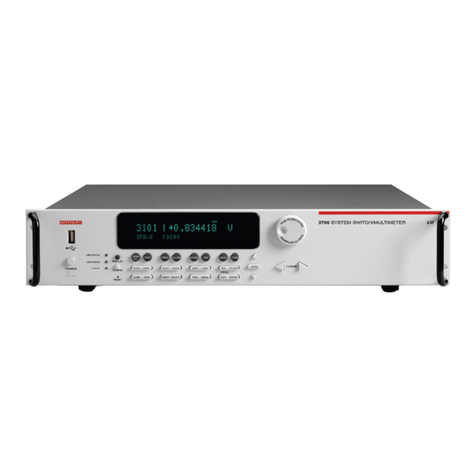
Keithley
Keithley 3700 series user manual
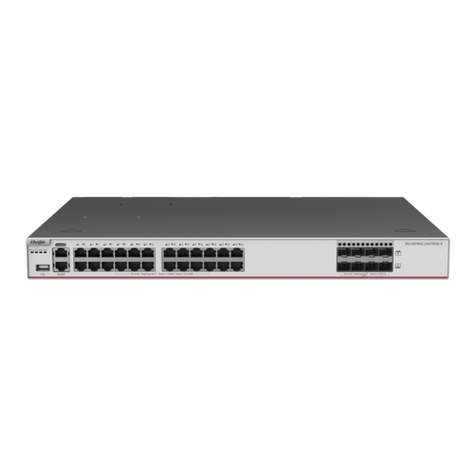
Ruijie
Ruijie RG-S5760C-X Series Hardware installation and reference guide
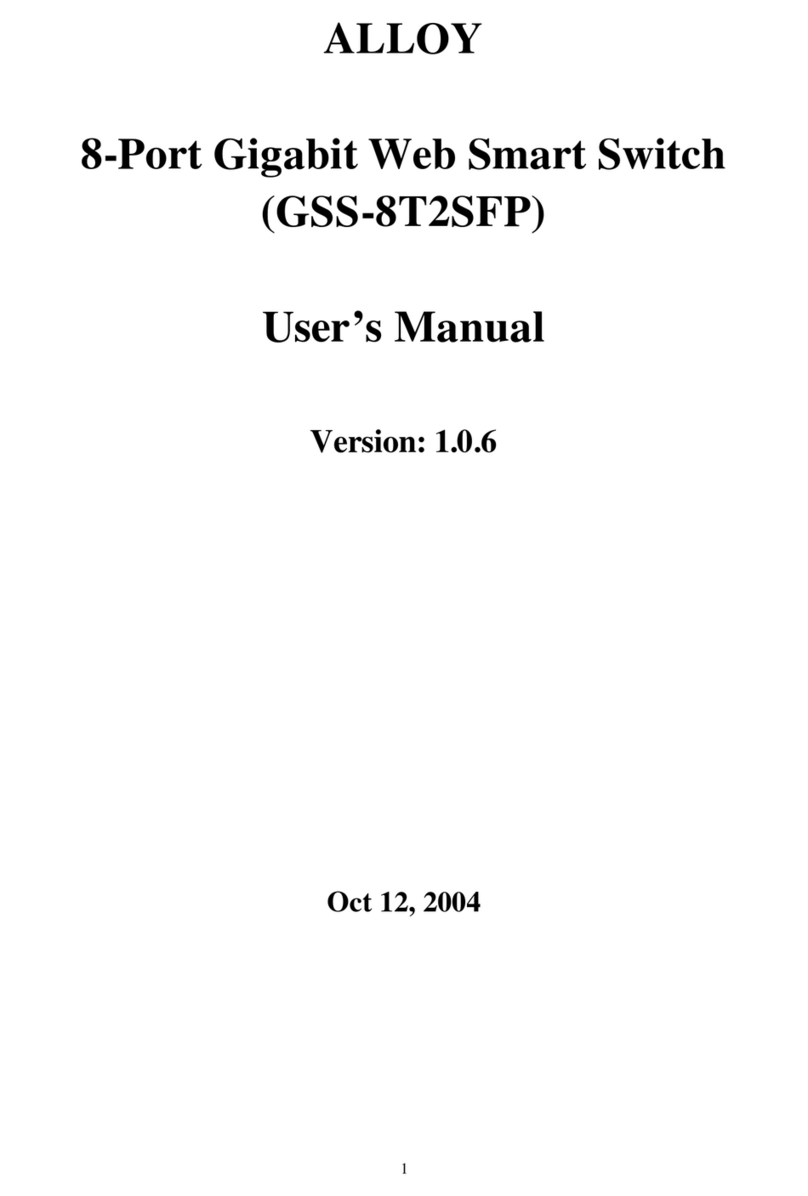
Alloy
Alloy GSS-8T2SFP user manual
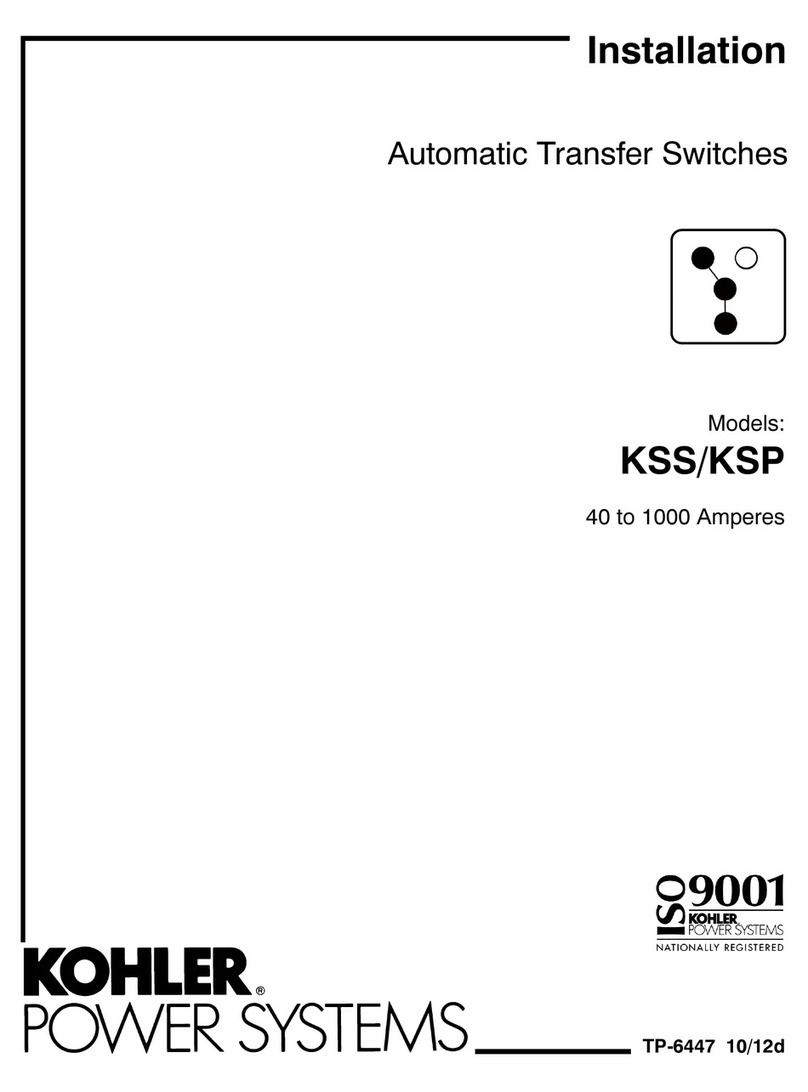
Kohler
Kohler KSS Series Installation
